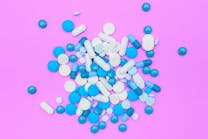The results of laboratory diagnostics have serious implications. A false positive or false negative of any kind can be potentially life-altering. False results in drugs-of-abuse testing can impact an individual’s career advancement, lead to social stigmatization, and even mean the difference between freedom and imprisonment for the person involved.
In spite of rapid advances in laboratory science, drug tests are susceptible to manual and systemic errors. Even with the utmost care, it is not possible for analytical laboratories to achieve 100 percent correct results. Naturally, the question arises: to what extent can drug testing labs be liable for faulty results?
Labs’ liability: an emerging legal consensus
Drug testing laboratories have, until recently, been largely unaccountable for erroneous test results. In recent years, however, lab have increasingly been taken to court and found liable for damages.
Many cases of drug testing laboratories successfully being sued are related to termination of employment. For instance, in Landon v. Kroll Laboratory Specialists, Inc.1, the plaintiff suffered termination of employment due to false-positive drug test results. He was given the right to sue on the grounds that the laboratory used a lower-than-recommended threshold for testing for the drug THC in the bloodstream. The court agreed that the lower standards warranted allowing Landon to sue Kroll Laboratories for “negligent testing.”
In the Sharpe v. St. Luke’s Hospital case,2 an employee was fired due to a positive test result for cocaine from routine, random drug testing. The employee claimed that the chain of custody for her urine samples was adversely affected by numerous events which occurred at the hospital, as a result of which her specimen falsely tested positive. The case went through numerous judicial reviews. Eventually, the Pennsylvania Supreme Court ruled that the hospital “should have realized that any negligence with respect to the handling of the specimen could harm [the employee’s] employment. The substantial harm deriving from inaccurate results (termination of gainful employment) would be a foreseeable consequence of a breach of the duty of reasonable care.”
Laboratories have also been held liable for wrongful termination of employment due to false positive results in Berry v. National Medical Services3 and Quisenberry v. Compass Vision.4
Apart from workplace issues, drug testing providers are being sued for indirect harm to patients. In the case of Devore v. Magee-Women’s Hospital of the University of Pittsburgh Medical Center the defendant settled with a mother who lost her newborn after an erroneous drug test.5 In a similar lawsuit, Jameson Hospital agreed to pay a $143,500 settlement to a mother whose infant was taken away from her family for five days based on a false positive drug test.5
There are many other foreseeable situations in which laboratories may be liable for damages due to incorrect test results. False positives are not the only danger in workplace drug testing. If workplace accidents occur due to an employee being under the influence of drugs, a false negative could similarly expose the laboratory to damages, as the person who caused the accident might not have been working if the diagnosis was correct. In therapeutic drug monitoring (TDM), misclassification of therapeutic compliance could lead to addiction or adverse events and similarly lead to liability exposure for laboratories. Those situations have not yet produced litigation, but they are, as the saying goes, “a lawsuit waiting to happen.” This is a dangerous time for labs.
Strategies to mitigate risk
The first risk mitigation in any diagnostic setting comes from practicing simple safeguards such as ensuring correct patient identification and proper sample transport and storage. These safeguards, however, will not materially mitigate risks like the ones discussed above. Likewise, once the sample is injected for LC/MS analysis, it is too late to correct for many sources of error. Much of the risk mitigation must come down to the enzymatic hydrolysis.
Many drugs and substances subject to TDM are present in our bodies in a conjugated, glucuronidated form. Those include opiates, opioids, tricyclic antidepressants (TCAs), benzodiazepines, cannabinoids, and many new psychoactive substances. Therefore, β-glucuronidases are, by far, the most common enzymes used to cleave the analytes from the glucuronide and allow labs to effectively separate the drug compounds using liquid chromatography.
What many laboratories do not consider is just how varied these enzyme preparations are. Between the different species that β-glucuronidases are taken from, along with the recombinant and/or engineered variants which have been developed, there are dozens of commercially available β-glucuronidases from hundreds or potentially thousands that have been identified and purified. In any given β-glucuronidase preparation, the total protein content may differ by a factor of 10. The activity and specificity of β-glucuronidases may vary by a factor of five. The temperature and pH at which the enzyme is active often differ significantly. The buffers used may be different. These factors are critical in the outcome of the analysis.
Actionable and preventable sources of error
Many sources of analytical error have a basis in preventable preanalytical conditions and are due to unwanted reactions during sample preparation such as conversions, derivatizations, and binding, or simply due to incomplete hydrolysis. Many can be predicted and rectified.
Heroin is commonly detected in urine as its unique metabolite 6-monoacetylmorphine (6-MAM) and its major metabolite morphine. Detection of 6-MAM has been considered the definitive evidence of heroin use.6 However, a false positive identification of heroin is possible when high levels of morphine are present in the urine samples and acetate buffer is used for enzymatic hydrolysis. When it is possible that morphine will be present, the use of enzyme preparations requiring acetate buffer should therefore be avoided.
A commonly overlooked source of preanalytical error in drug testing is the reductive transformation of benzodiazepines.7,8 The treatment of urinary oxazepam by β-glucuronidase enzyme preparations results in the production of nordiazepam (desmethyldiazepam) artifacts. This unusual reductive transformation also occurs in other benzodiazepines with a hydroxyl group at the C3 position, such as temazepam and lorazepam.7 Unlike acid-catalyzed hydrolysis, which is known to induce benzodiazepine degradation and transformation, the β-glucuronidase method was not known until recently to cause such transformations; however, it is not necessarily surprising considering that many β-glucuronidases are active at low pH conditions. Utilizing β-glucuronidases which are active at neutral pH is therefore important to ensure proper reporting of benzodiazepines. There is some evidence suggesting that TCAs are also labile under low pH conditions.
A number of compounds which are often critical to drug testing may become protein-bound in significant quantities. Fentanyl is especially prone to protein binding,9 but other opiates and opioids such as morphine10 and oxycodone10 also bind in significant quantities, having potential ramifications in therapeutic drug monitoring.
When analyzing any difficult-to-cleave analyte, such as opiates and opioids, the upper limit of quantitation (ULOQ) needs to be considered. Many protocols not only won’t completely hydrolyze all glucuronidated analytes but fail to recognize this due to poor experimental planning, which leads to misplaced confidence in results. In order to ensure that the drugs are completely liberated from their glucuronide, careful selection of the hydrolysis control is necessary. The compound used as a hydrolysis control should be the hardest-to-recover compound within its class (for instance, codeine-6-glucuronide with opiates/opioids), and a compound from all classes should be utilized in case there is an effect which is unique to that class of compounds, such as acid lability. Only by using the conjugate from each class that is the most difficult to recover and seeing complete recovery of those controls can labs be confident that drugs of interest within the sample are also completely recovered. Using a highly active β-glucuronidase can help ensure complete hydrolysis as well as improve operational efficiency.
Being aware, being prepared
Test results from analytical laboratories are the basis for important decisions in medicine, forensics, workplace drug monitoring and other areas. Consequently, results need to be correct and reproducible. The consequences of false-positive or false-negative results can be extreme for both laboratories and patients. Drug testing companies used to be largely unaccountable for their test results but now are increasingly held liable and find themselves involved in lawsuits due to errors that are probably common throughout the industry and, in many cases, may be unknown to the laboratories analyzing the specimens. To minimize and mitigate these risks, laboratories must identify and eliminate sources of error with a special focus on preanalytical steps, where many errors originate. The preparation of urine specimens should be reevaluated in many laboratories, and consideration given to the enzymes and conditions used during hydrolysis.
References
- Clark M. Should drug testing labs be liable for faulty results? The Pew Charitable Trusts.
- Russo K. Hospital may be liable to client’s employee for mishandling drug test. Jackson Lewis P.C.
- Judith Berry v. National Medical Services, Inc., d/b/a NMS Labs; and Compass Vision, Inc. No. 99,953. (Supreme Court of the State of Kansas 2011)
- Eva Quisenberry v. Compass Vision, Inc; and Quest Diagnostics, Inc. dba Northwest Toxicology. No. 07CV1135 BEN. (United States District Court, S.D. California 2007)
- Balko R. County settles with mother who lost newborn after erroneous drug test. The Washington Post. March 17, 2014.
- Wang S, Heideloff C. Formation of 6-aetylmorphine in urine samples with high morphine levels during sample preparation involving enzymatic hydrolysis. The Association for Mass Spectrometry: Applications to the Clinical Lab Annual Conference. 2015.
- Fu S, Molnar A, Bowron P, et al. Anal Bioanal Chem. 2011;400:153.
- Fu S, Lewis J, Wang H, Keegan J, Dawson M. A novel reductive transformation of oxazepam to nordiazepam observed during enzymatic hydrolysis. J Anal Toxicol. 2010;34(5):243–251.
- Bower S. (1981), Plasma protein binding of fentanyl. J Pharm Pharmacol.1982;34(2):102-106.
- Leow KP, Wright AWE, Cramond T, Smith MT. Determination of the serum protein binding of oxycodone and morphine using ultrafiltration. Ther Drug Monit. 1993;15(5):440–447.





